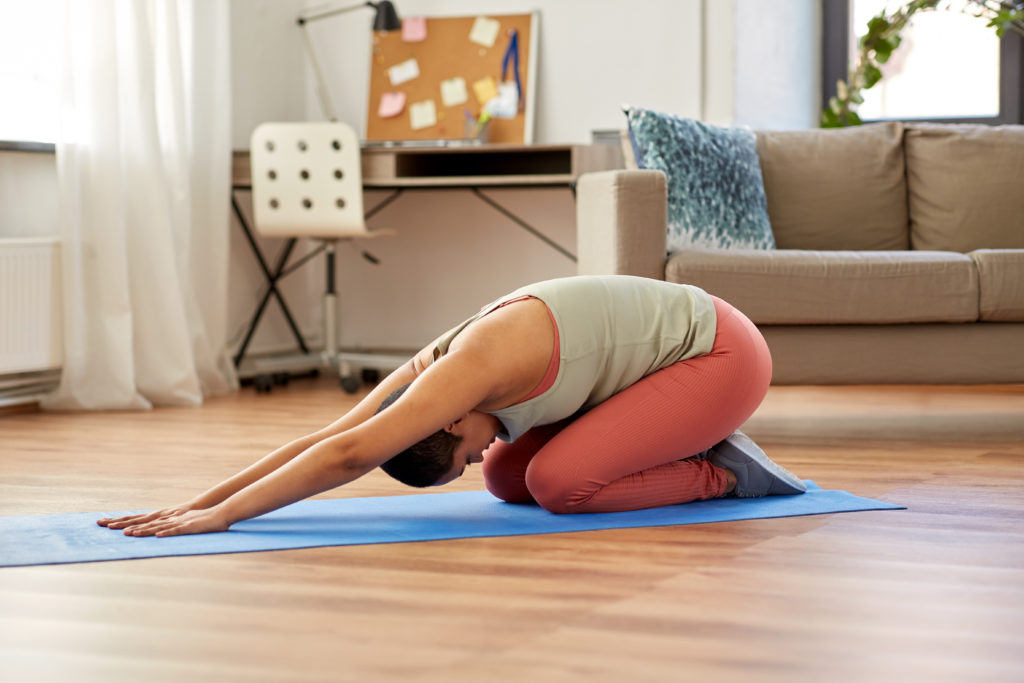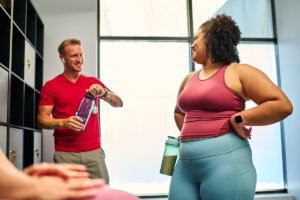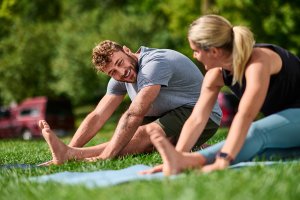You’ll be happy to learn that rest days are an essential part of your fitness journey. That’s right, people! Get rid of the feeling of failure you have for not hitting the gym seven days a week. But if you think rest days are for laying completely perpendicular on the couch, think again. Taking a rest day doesn’t always mean doing absolutely nothing. It’s time to start incorporating active recovery into your workout plan!
Why is recovery important?
Research and facts show that with any intense exercise—especially strength training—you’re breaking down muscle tissue causing very small tears in the fibers. As your body begins the muscle repair process, it increases inflammation, which can lead to pain and feeling sore 12-48 hours after a workout (also known as delayed onset muscle soreness). Giving your body an active recovery day allows your muscle groups the opportunity to begin to rebuild themselves—and it will help with a lot of the pain and inflammation, too!
When you don’t give your body the chance to recover from your workouts, you can run the risk of overtraining. Oftentimes, this happens when athletes of all fitness levels train too hard or too often to reach their fitness goals and push their body past the point of fatigue and soreness, making it difficult to recover. Symptoms of overtraining may include things like: extended muscle soreness, a weakened immune system, poor sleep quality, a decrease in performance during workouts, or even worse, injury. Not good!
Incorporating both active and passive recovery days will give your body the chance it needs to repair itself, recover, and grow. Scheduled rest days are also a great way to take a mental break from your regular workouts and allow you to re-energize and begin a new page in your fitness journey.
Active recovery vs. passive recovery
Active recovery movements are meant to be light and easy compared to heart-pumping workouts, but they will vary somewhat for people based on their fitness level. The goal is to get moving just enough to increase blood flow circulation, break up lactic acid, and stimulate your body’s recovery process for your muscles and joints.
Passive recovery is the opposite of active recovery, in that it requires no movement. Typically, passive recovery is used to help heal from serious pain or injury. This type of recovery can be tempting to resort to—especially when experiencing muscle fatigue and soreness—but getting up and moving is actually one of the best things you can do to help your muscles and body restore.
In fact, opting for active over passive recovery has other benefits, including better flexibility, elevating your mood, increasing energy levels, and helping you stick to your goals for calories and nutrients on your active days.
What can I do on active recovery days?
Save Netflix binges and passive recovery for another time; you’re fit, active, and full of energy. In other words, keep it moving!
The following ideas will help you take full advantage of your time away from the squat rack. Try any of these suggestions next time you’re looking for a new active recovery session:
- Spend time focusing on dynamic stretching for flexibility, mobility work to improve your joints’ range of motion, self-myofascial release with foam roller, or core strengthening exercises
- Go for a brisk walk in the park, or by the lake/beach (it doesn’t need to be a long walk)
- Ask some friends to get active outside of the gym by rock climbing, kayaking, hiking, or bowling
- Go for a swim in a pool or lake
- Take the dog for a walk
- Spend time running around with the kids for quality active time
- Make a special trip to a trampoline park
- Hit up the local playground
- Go out dancing for date night or with friends
- Opt for low-intensity exercise intervals or light cardio such as jogging on the treadmill, riding on the stationary bike, a bodyweight workout, or hopping on the elliptical
- Take a restorative yoga class to stretch your muscles and your mind
- Schedule a massage for yourself to really help those muscles relax
Active rest day workouts, and the amount of recovery time, will look different for every gym-goer. For those of you attacking an intense program each day, your active recovery workouts should include light activity like stretching and using a foam roller. If you’re new to the #fitfam and your workouts have been light to moderate, you can do more intense forms of active recovery like cardio and endurance training. Aim for 15 to 60 minutes of action, but remember: the goal is to increase blood flow circulation and maybe break a light sweat—not get a full workout in! (Athletes, we’re talking to you.)
Since your body is working to recover, it’s important to replenish and refuel it with the proper nutrients it needs to rebuild itself. Eat plenty of fruits and veggies, lean proteins, and drink lots of water to speed up the process!
TL;DR: choose active recovery workouts that keep you moving, make you happy, help you relieve stress, and stop you from counting sets and reps every day. Give yourself permission to step back and enjoy your fitness journey. Your body and mind will thank you!



